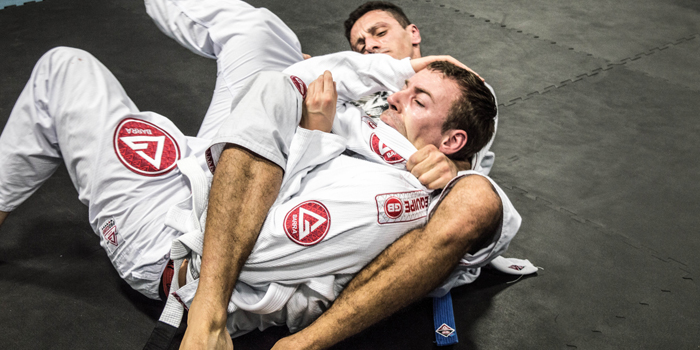
Brazilian Jiu-Jitsu has never been more popular; therefore, it has never been more misunderstood from an exercise science standpoint. Popularity, in our field at the least, implies an over-saturation of misinformation. It’s this article’s intention to provide anecdotal and empirical information in an effort to render a far more concise comprehension of strength and conditioning as it relates to the martial art of Brazilian Jiu-Jitsu.
I began Brazilian Jiu-Jitsu at the age of 17, when UFC was still on the rise. I became a purple belt under John Danaher and black belt Brian Glick by December of 2008, procuring this belt rank in roughly three years.
I strayed from the pursuit of my black belt because weightlifting was always a far more potent source of intrigue for me. I was obsessed with lifting — it was an unexplored world that harbored ceaseless potential. Fortuitously, strength and conditioning has facilitated the maintenance of Brazilian Jiu-Jitsu as an integral element of my daily life.
Lifting has become the superlative means of appropriating the maximization of physical potential and promoting longevity; a concept ever-increasingly appreciated by Brazilian Jiu-Jitsu practitioners. Nevertheless, Brazilian Jiu-Jitsu strength and conditioning is novel and misunderstood by many novice enthusiasts who begin erroneously promulgating measures they deem apropos to enhancing competitive performance. Indubitably, it is advantageous to have prior on-mat experience when faced with rendering a sport-specific strength and conditioning regimen, or at the very least, exposure to the sport for a substantive amount of time.
RECENT: Program Guidelines for Young Strength Coaches
The succeeding guidelines are reflective of experience training competitive Brazilian Jiu-Jitsu athletes as well as lessons acquired from my own time spent attempting to combine particular lifting dogmas with consistent Brazilian Jiu-Jitsu training.
Dynamic Correspondence
Any and all cogent programs for a sport have to predicate all implements on considerations of that sport’s movements and the nuances contained therein.
Conspicuous priority is lent to the agonists of the primary motor pattern and the specific action of those prime movers, whether it is concentric, eccentric, or isometric.
The tertiary consideration comprises the range of motion of the primary motor task and its course, running the gamut from a primarily lateral (frontal), or linear (sagittal) direction of effort, to a multiplanar pattern.
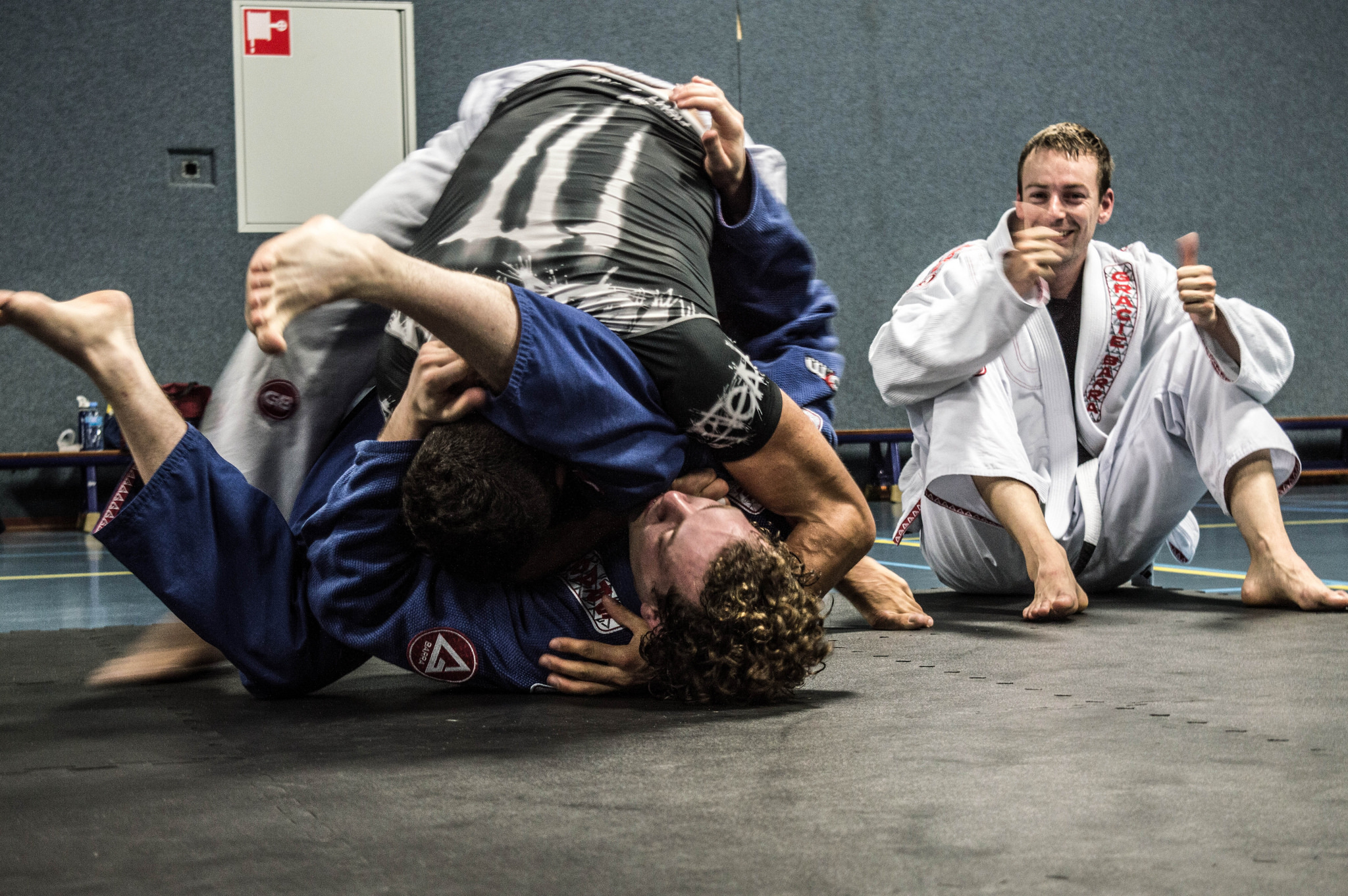
Heiko Hartsuijker © Flickr
Consider the emphasized portion of the range of motion. The means that you administer within the confines of the program must also reflect the power attributes of the sporting action, taking note of the force and velocity qualities unique to it. Acceleration characteristics should be appreciated and further reflected in exercise selection. Finally, accentuate the pattern’s timing parameters. An example is provided below.
Whether it is the standing portion of a match or the newaza (ground) facet, one’s hips, and the strength and dexterity thereof, dictate to a sizeable extent the success of the athlete. Acknowledgment of this will facilitate the appointment of the program’s priority movement.
Back issues are a recurring theme amongst practitioners as well, due to the momentous time spent in spinal flexion during the passing of the guard and playing of the guard itself. The addition of compressive external forces from an opponent’s body mass while in spinal flexion compounds the matter.
Despite the sport boasting actions concentric and eccentric in nature (which endorses the case for eccentric-concentric movements to enhance competitive maximum strength), there is a tremendous quantity of isometric action.
WATCH: Dave Tate's Top 5 SS Yoke Bar Movements
The Zercher Box Squat becomes a clear choice for a Brazilian Jiu-Jitsu athlete’s priority movement. Placement of the load engages the elbow flexors isometrically (corresponding musculature is statically involved during nearly all submissions, guard passing, and overall opponent control), averts axial loading mitigating extraneous compressive forces on said structure, forces hip flexion in all three planes of movement augmenting strength and flexibility in the transverse plane that are especially vital to guard retention and submissions (contemporaneously promoting health of the hip complex through strength and stability), requires a dynamic effort to oppose the isometric action initiated by the box with simultaneous minimization of duress on the lumbar and ankle, and will incite accretions in competitive maximum strength. Each repetition should be done with maximal power output, as few movements done in competition are executed passively without intent.
While the box will teach the athlete to dynamically suppress a static state, it is the coach’s responsibility to impart the notion of concentric velocity to the athlete, addressing acceleration concerns that translate to hip extension dominant movements such as sprawling and open-guard passing.
The phosphagen system is capable of supporting intensive based endeavors for a maximum of approximately 30 seconds. If the work interval surpasses this limit, the venture mutates into a lactic one. Bearing this in mind and that the Brazilian Jiu-Jitsu competitive season is year-round, the repetitions are kept low. Specifically, repetitions never exceed four per set, and sets never exceed three. The goal of the primary movement is to augment strength and said rep range with appropriate intensities, develop intermuscular and intramuscular coordination while limiting the amount of mechanical work performed and attendant muscular soreness.
Year-Round Season
The Brazilian Jiu-Jitsu competitive circuit, in stark contrast to the vast majority of sports, is not seasonal with open tournaments featured for all four seasons. The amount of invitational tournaments, super fights, and qualifying trials, hosted by an ever-increasing number of federations, has inundated the competitive landscape. Travel is constantly required of the athlete. Three-hour trips to Pennsylvania are commonplace, and flights to Europe and Asia are far from unheard of.
One must also address the reality of practice intensity and volume. Brazilian Jiu-Jitsu athletes spar and drill upwards of six times per week, irrespective of upcoming competitions and typically spar at full exertion, as the parameters of submission grappling facilitate an environment conducive to high-intensity training.
The martial art’s striking counterparts are limited to practice intensity by the possibility of brain trauma from excessive contact. Consequently, a Brazilian Jiu-Jitsu eight-week strength and conditioning template forgoes the higher repetition acclimation phase available to seasonal sports (illustrated in greater detail later in this article), adhering to far fewer total repetitions.
Supplementary Movements
This section is binary, consisting of furthering our comprehension of lifting as a supplementary endeavor and supplementary movements themselves.
Tiers reserved for ancillary movements should not only serve to increase competence within the priority pattern, but also address energy system demands and injury sites.
Combat sports generally require aggrandizements in neck size, in addition to strength accruals. A larger surface area provides stability for a structure, transmitting and stabilizing forces, and is a principle strength coaches aptly apply to ball-and-socket joints and typically to the neck. Therefore, it may seem counterintuitive to proclaim that burgeoning neck size is disadvantageous to a jiu-jitsu athlete. Simply stated, a larger neck is easier to choke. The lapel of the kimono needs to travel a shorter path to impress force upon the neck and sink into the carotid artery.
Consequently, whether it is with the Iron Neck or the elitefts Deluxe Padded Head Harness that my athletes and I rely heavily upon, the repetition range should stimulate myofibrillar hypertrophy, shying away from its sarcoplasmic counterpart. The head is a significant point of contact for the athlete, administered to fortify balance in particular positions and purvey additional pressure on specific sites of an opponent to incite discomfort or leverage. Strength in the sagittal plane, through protrusion and extension, is pivotal.
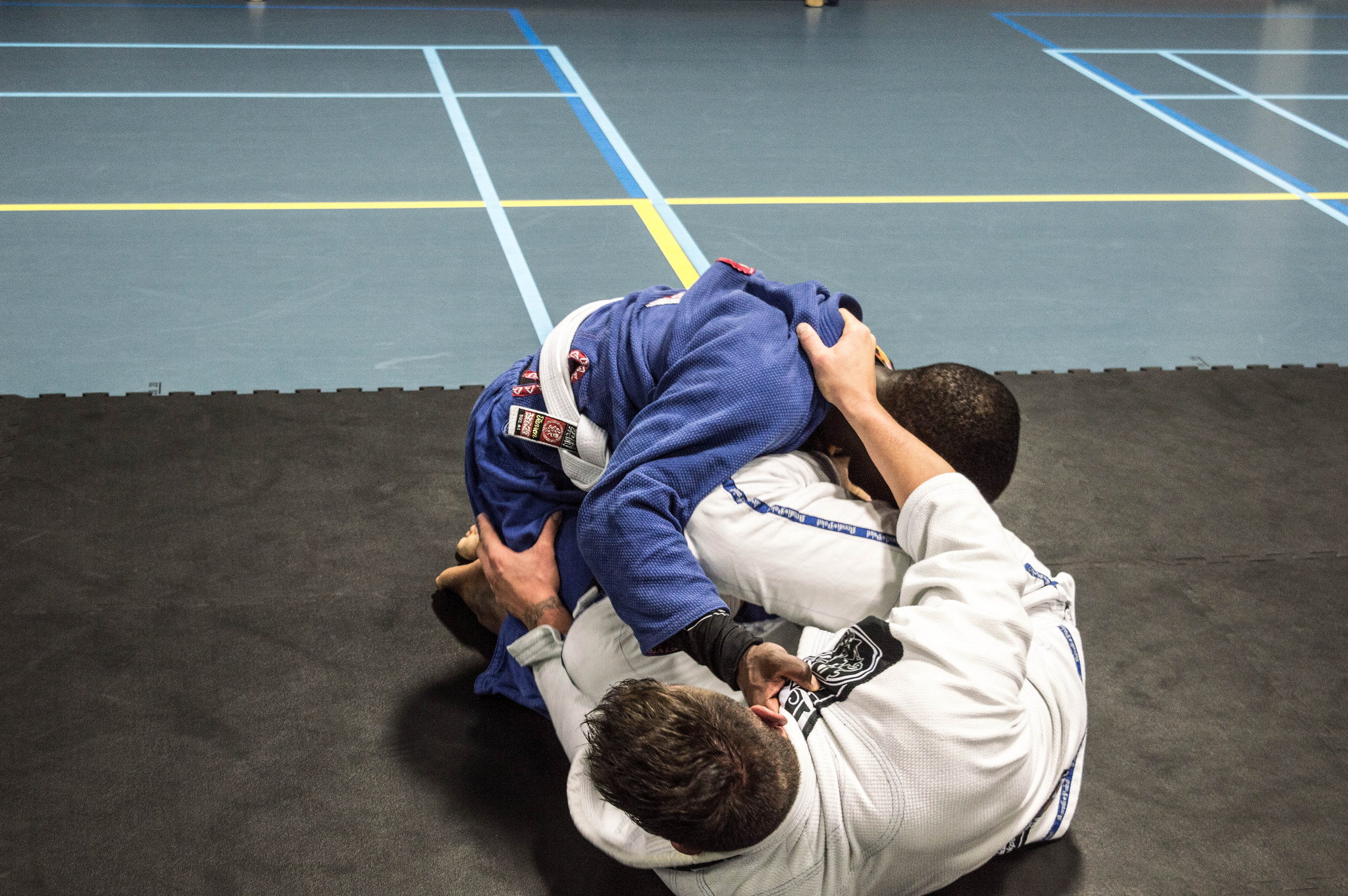
Heiko Hartsuijker © Flickr
Although the back and neck receive sizeable duress, the knee must not be ignored. Contralateral Bulgarian Split Squats develop triple stability through the ankle, knee, and hip, and due to load placement, further stimulate Vastus Medialis Oblique activation than its traditional version. Extreme contortion of this hinge joint places ligamentous and cartilaginous structures in peril, either from particularly unnatural guards and submissions (heel hook variations and varied leg locks), to attack the joint itself, and requires further stress of the medial portion of the knee for longevity.
These are done for one set in a repeated effort fashion at either five- or four-rep maxes for three purposes: to attenuate mechanical work performed and attendant soreness; it serves as a supplementary movement to the Zercher Box Squat and must be augmented accordingly; the four- to five-rep max repetition range is technically training the muscle itself to avert extraneous Central Nervous System fatigue, as three repetitions and below train neuromuscular coordination.
Hip extension should be trained as an accessory in a submaximal fashion due to the incessant forces that the lumbar region incurs from posture of the sport’s actions, specifically significant spinal flexion oft assumed while under sizeable compressive forces induced by opponents’ pressure. Additionally, many athletes are vulnerable in this region due to strength deficiencies. The anti-rotation and anti-lateral flexion components of the Contralateral Bulgarian Split Squat activate and fatigue this region as well. Dumbbell Romanian Deadlifts with a fairly light to moderate load, accompanied by a Red Mini Band or Green Monster Mini, consider these points while reinforcing hinging capability and supplying benefits of accommodating resistance, such as the aforementioned concentric velocity. Hip extension is crucial for sprawling to defend a takedown attempt, applying pressure and minimizing space to prevent escape.
The succeeding movement of Day 1, out of a two-day program, is Gi-Pull-Ups done in accordance with the repeated effort method. Suffice to say, grip is an indispensable tool in a Brazilian Jiu-Jitsu competitor’s arsenal. Grip placement is variable, and utilization of the lapel or the sleeve is contingent on one’s needs and their tendency toward specific attacks.
RELATED: How to Build an Athlete's Grip
Therefore, converse with your athlete and inquire as to the grips they are predisposed toward. Comprehension of your athletes’ tactics will facilitate the engenderment of the program’s nuances, such as the grip they will assume on the gi top during pull-ups. This upper-body vertical pull and both the Bulgarian Split Squat and Romanian Deadlift are reserved for training alactic capacity. Marrying alactic movements, where phosphagen stores fuel exertions up to 30 seconds in duration with rest intervals of 90 seconds at most, will increase high-energy phosphagen stores within the muscle complex, precipitating explosive capacity.
The final movement of Day 1 is Manually Resisted Neck Protrusions. Despite it being a postural and tonic muscular group comprised of fatigue-resistant Type I fibers, repetitions shouldn’t exceed 10 due to the excessive fatigue actualized by manual resistance and the resultant decrease in tension from said fatigue. One will often have to, whether seated or standing, protrude the neck to either jostle for dominant posture and concomitant advantageous positioning or supply pressure to secure a pass.
Prior to discussing other programming elements, it’s important to note that dividing movements into “push” and “pull” is a fallacious oversimplification. Viewing Day 1 through such optics would lead some to classify it as imbalanced, due to a perceived 2:1 push:pull ratio.
However, if we note that box squats require the hip complex to be optimally moved posteriorly, actualizing inimitable activation of the hip extensors, distinguished by a vertical shin angle, it is apparent that this isn’t a push movement targeting the anterior compartment of the thigh.
Additionally, through EMG activity, Bulgarians have been shown to recruit the hamstrings to a greater extent than the quadriceps. Although these terms are still used to concisely communicate movement patterns, keep in mind that they are oversimplifications.
Day 2’s primary focus attends to upper-body horizontal pushing strength in a fashion specific to the amplitude of the sport.
WATCH: Body Weight Training for Upper Body Strength and Power
Brazilian Jiu-Jitsu may be simplified into two positions: top or bottom. If one is on the bottom of a mounted or side-mounted position, strength in the sagittal plane from 90 degrees of elbow flexion or less is inextricably linked to escape from such a disadvantageous situation. The Barbell Floor Press is unassailable in its ability to replicate the amplitude, that range of movement’s most prominent portion, the magnitude of the effort, the muscle’s work regime, and its direction and timing.
Two accessory patterns venture to rectify any deficiencies in relative strength — a concern for all athletes due to the high resistance supplied by their own body weight — primarily through pronated weighted pull-ups and secondarily through Rhythmic Stabilization Banded Push-Ups.
Simply loop an elitefts Strong Band around a rack’s J-hooks and perform a pushup with a three-second negative, one-second isometric action at the bottom, a two-second concentric action, and a one-second isometric action at the top. The preceding tempo for Rhythmic Stabilization Push-Ups is reflected in the program below in parentheticals (3/1/2/1).
There are myriad methods to purvey overload over the course of a microcycle, comprising weight-, set-, and rep-related increases. However, many overlook the significance tempo has on stimulating adaptation. Tempo may be waved over a predetermined course of time and is exemplified below.
The Rhythmic Stabilization Banded Push-Up is the first in a two-movement set with the second constituent being a Contralateral Single-Leg Romanian Deadlift to Row. The latter addresses further stabilization concerns of the knee joint through asymmetrical loading, forcing the knee to respond by load to medial and lateral shifts. Neck Harness Extensions are a basic, almost elementary, concept in training the neck, and perhaps why it’s such a potent tool for burgeoning the strength of the cervical extensors.
A Secondary Venture
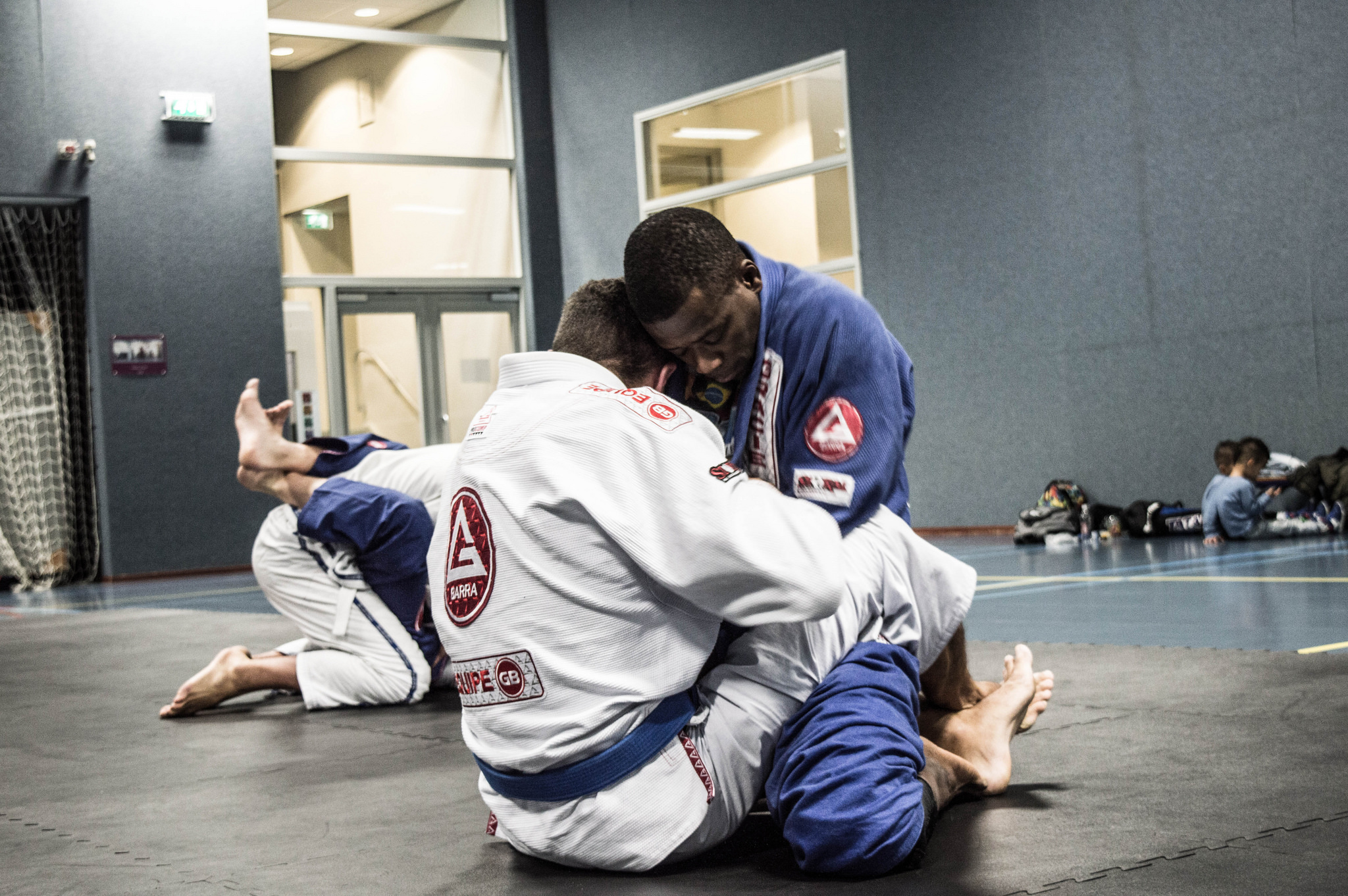
Heiko Hartsuijker © Flickr
It’s frustrating, especially in a strength and conditioning coach’s formative years, to digest the lack of physical strength and movement capability of athletes. That frustration stems from, ideally, the desire to witness all athletes excel and a strong distaste for anyone not optimizing their physical potential irrespective of age. We hope to pass the beauty of undertaking the maximization of our physicality onto our progeny or future generations we work with.
Still, we are few who pursue a life enveloped by weights. Consequently, we must not accept, but at the least appreciate, that lifting is novel to many athletes and is supplementary to their primary concern.
The quantitative (volume) aspects of a program, specifically the administration of weights, sets, and reps, should reflect that their time in the weight room is a secondary venture to their primary concern: their sport. Just as dynamic correspondence molds the overall qualitative (drill) facets of the program, so should the preceding concept mold the program’s quantitative aspects.
Prilepin’s Chart may be a guideline that, upon the mere utterance of it, fosters a sense of banality among veterans of the field; however, it is a guideline that is far from cliché. It’s both intensity and volume management at its best. The chart proffers not just optimal repetition ranges, but also the optimal amount and concomitant set and intensity restrictions.
Upon first glance, 70 percent of one’s 1RM at four sets of five repetitions for a total of 20 repetitions, well within the confines of the suggested repetition range of 12 to 24 and hovering near the optimal total repetition count of 18, may appear to be insufficient to elicit sizeable adaptation. Field experience has proven that, especially in relation to lower extremities, this will initially foment decent muscular soreness and is certainly substantial enough in terms of mechanical work performed to not only incite fortification of relevant muscles but also of the movement pattern itself.
Suffice to say, employment of the above is done in a linear fashion. Coaches may feel overwhelmed by programming priorities: sets, reps, and intensities. One typically does not, and certainly should not, test a team for the first three weeks. Time must be allotted for motor learning to occur and musculoskeletal structures to develop enough to endure the rigors of higher intensities. The resultant of the aforementioned is a three-week wave comprised of 5x4 on Week 1, 5x5 on Week 2, and 5x6 on Week 3.
This first week of training requires the utmost attention of the coach to discern the specific weight an athlete should exercise. A typical stipulation we mandate the athletes adhere is the selection, to the best of their ability, of a weight they can execute for seven to eight reps. If the coach concurs, then Weeks 2 and 3 are rather seamless.
Week 4 involves testing the athlete’s five-rep maximum, which is unbeknownst to the coach at that time. In order to mitigate pandemonium in attempting to proactively ascertain 30 individuals’ five-rep max, we allow them to work up in sets of five repetitions until they reach the heaviest weight they can perform for five reps. Once this number is determined, we can begin formulating the primary movements for all succeeding weeks. Each subsequent Test Week is executed in accordance with their formulated five-rep max, which at the maximum may be performed for seven repetitions, otherwise known as an “open-cut” set.
It’s widely accepted in the profession that the higher the repetition count, the more erroneous the estimated 1RM becomes. The coach can halt the set at five, six, or seven reps. The set is allowed to be “open” in said fashion because programming is an imprecise, inexact process. The program is a living organism, just like the athlete, that requires incessant attention and alteration.
You may have correctly predicted the five-rep max test weight or find yourself mystified that at rep seven, the athlete could have kept going. Admitting imprecision is a must for you to succeed as a coach. If you’re intransigent, you are predisposing the athlete to injury. This is why you must be especially perspicacious and assiduous during the first three weeks of training.
READ MORE: The Simplicity Project: Expanding to Two-A-Day for Strength and Size
The first microcycle doesn't contain percentages because it’s implausible for a college team to arrive after a summer of inactivity to test a squat or any other gross motor pattern, superseding formulations for that initial phase.
Below is the second microcycle formulated with that individual’s maximum of 405 pounds for the Zercher Box Squat and 315 pounds for Barbell Floor Press. Testing on Week 4 will prove whether the loads were stimulating, retaining, or detraining in magnitude depending on the result.
Completion of five repetitions on Week 4 means the athlete has maintained, which is not the intention. A six-rep performance denotes a six-pound increase in the athlete’s 1RM, while seven repetitions with the same load of 350 pounds will estimate the athlete’s 1RM at 421 pounds and an overall improvement of 16 pounds for Zerchers after a mere three-week cycle. As one’s 1RM increases, the difference between intensities of 87.5 percent on Week 2 and 87 percent on Week 4 become apparent; this distinction isn’t visible with lower maximums.
The objective of Weeks 2 and 3 is to expose the athlete to higher percentages than that which they will test on Week 4. Even if their maximum is lower with no visible numeric differences in poundage, they will have, at the minimum, moved the test weight two weeks prior, augmenting the likelihood of a 1RM increase.
Max Barnhart, MA, CSCS, has been involved in collegiate strength and conditioning at the NCAA Division I level for eight years. In addition to coaching, Max has been fortunate enough to publish two articles in NSCA publications and to conduct his master’s thesis on the reduction of the bilateral deficit and concomitant effects on extroversion and personality type. Max’s true passion is the optimization of student-athletes’ athletic and personal potential through strength training and through raising mental health awareness among such populations.
Header photo: Heiko Hartsuijker © Flickr











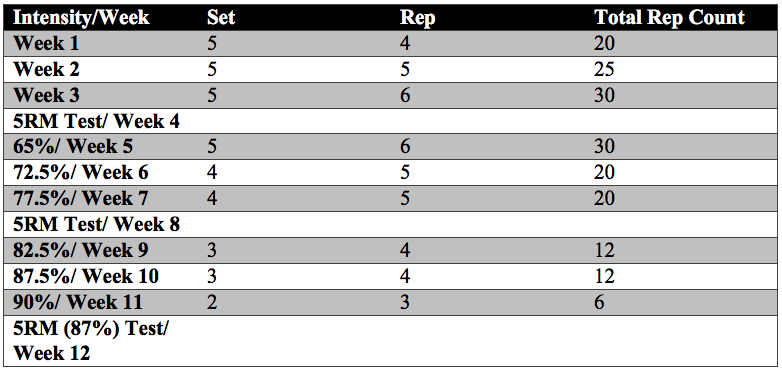
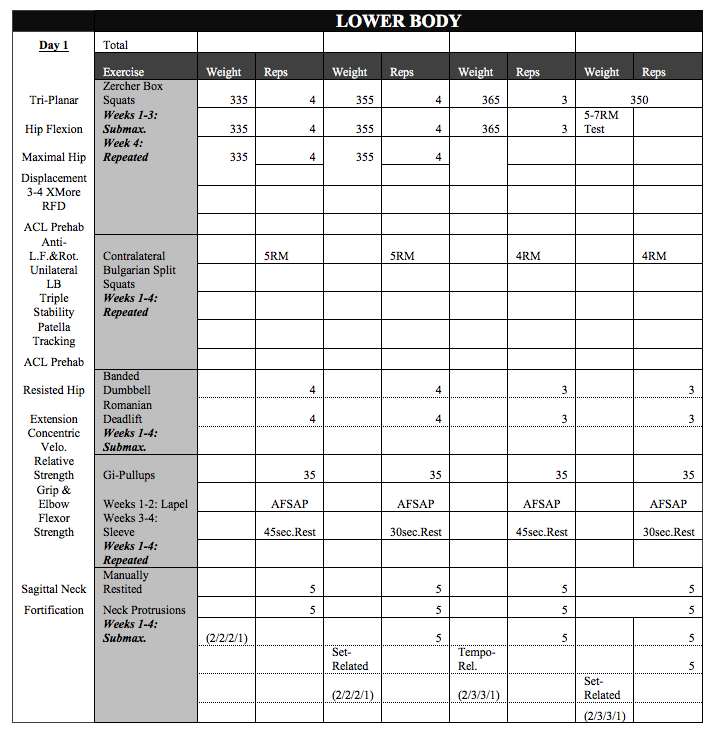
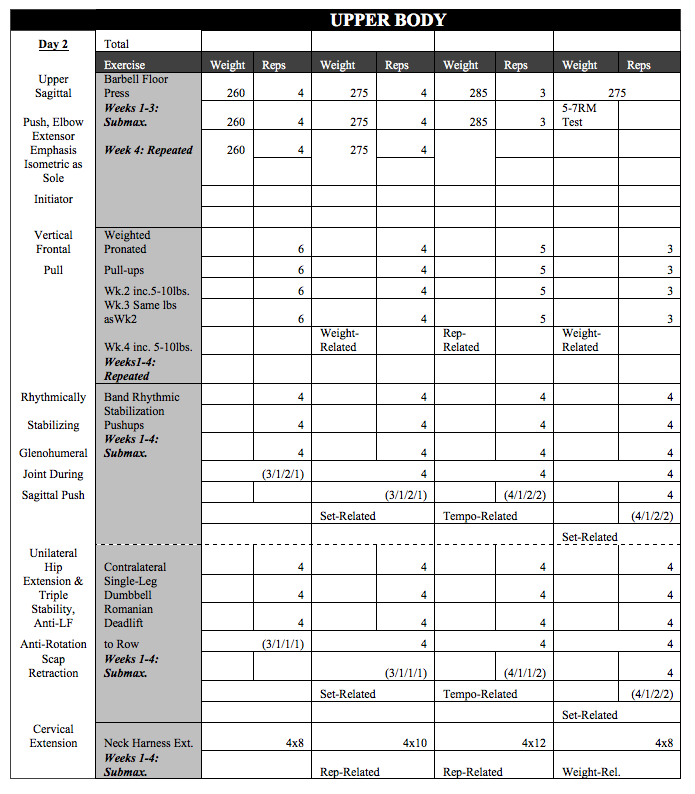
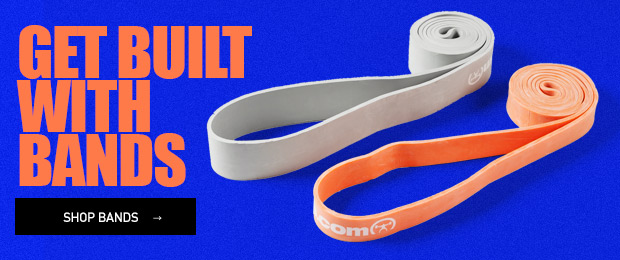
1 Comment